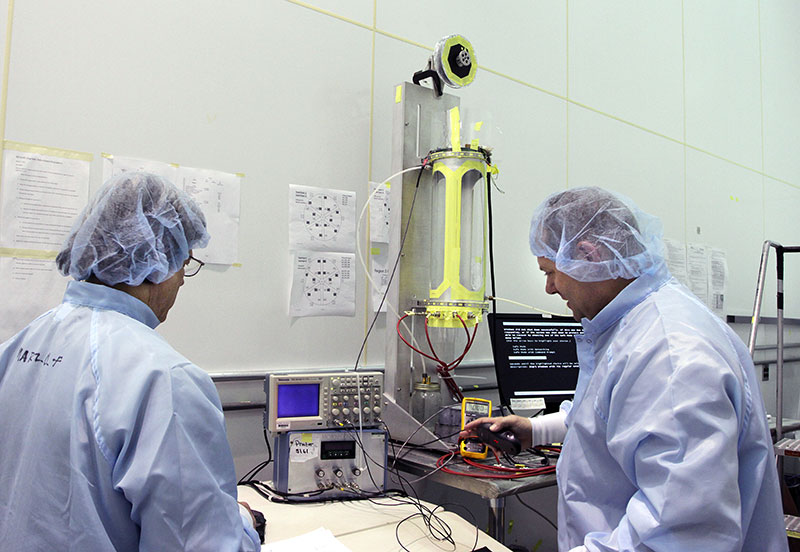One of my childhood heroes was Leonardo da Vinci. He represented so many things to me: an artist, a scientist and an inventor. I later learned that the step from scientist to inventor is an easy one. While I was never able to call myself an artist, I did manage to rightfully take on the mantles of scientist and inventor. At Jefferson Lab, we are designing and performing experiments in new ways to revel the secrets of the matter that makes up our universe. The search for these treasures of knowledge takes many twists and turns. Along this journey it is not surprising that inventions and discoveries result from our efforts. You most likely have heard that necessity is the mother of invention. I often see that the mother of invention is just good old-fashioned paying attention.
Pay Attention!
What do I mean by that? Here at Jefferson Lab, physicists and engineers can be laser-focused on just the problem at hand. Perhaps a new type of tool is needed to measure a certain collision between our electron beam and the target atom, so they come up with a solution such as a new method or a new device. However, if they (or someone on their team) notice that this new method or device could be used in another way—now you have an invention! Next, you need to decide what to do with this discovery. As Chief Technology Officer at the lab, I encourage scientists to write their down innovations so that they could be considered for a patent. United States patents are used to protect inventions that leads to the continuing improvement of our lives and well-being, which protects the U.S. and the inventor.
You Invented Something, Now What?
As a young scientist starting out at Jefferson Lab, I too was encouraged to submit invention disclosures and to consider applying for U.S. patents. With my co-inventors we were successfully awarded several, and for a variety of technologies. So what is a U.S. patent and how do I get one? Patents are awarded to inventors by the U.S. government through the United States Patent and Trademark Office (USPTO). To receive a patent, the invention must meet certain strict requirements of novelty (that I won’t bore you with here). Once issued, a patent certifies that the invention is now the accepted property of the inventor and no one else can use it without coming to the inventor first.
The important thing is that if you have a patent, you can not only make a product or business out of the invention, but you now have the backing of the U.S. federal courts to prevent others from using your idea without your consent. Your idea, also known as intellectual property, is safe from someone else using it for about 20 years, as long as you pay maintenance fees to the USPTO.
You can also decide to sell or license the use of your patent to someone else. Scientists and engineers at Jefferson Lab have been awarded a total of nearly 150 patents. In fact, in 2016, nearly 900 patents were awarded based on inventions produced from the 17 DOE national labs, and over 35,000 since 1940 (https://www.osti.gov/doepatents/faq#how_many_patents). Many of the Jefferson Lab patents have also been licensed by companies, allowing them to make products that improve our lives and create jobs.
Thomas Jefferson Would Be Proud
Besides carrying out our mission to provide a unique research tool for our universities and scientists to increase our knowledge of the universe, the nation also gets the added bonus of increased innovation and improved lives. As Secretary of State from 1790 to 1793, Thomas Jefferson was part of a three-person board which reviewed patents applied for by inventors in the young country. In fact, Jefferson was the patent examiner on the very first U.S. patent! (https://www.monticello.org/site/research-and-collections/patents https://www.wired.com/2012/06/thomas-jefferson-patent-examiner/). I have to think he would be proud to learn that the Virginia-based national lab, dedicated in his honor, carries on his passion and the work of discovery and innovation.
Follow us on social media to learn more in our next Tech Tuesday installment.
Questions? Email: jlabinfo@jlab.org
Drew Weisenberger
Chief Technology Officer
Jefferson Lab


